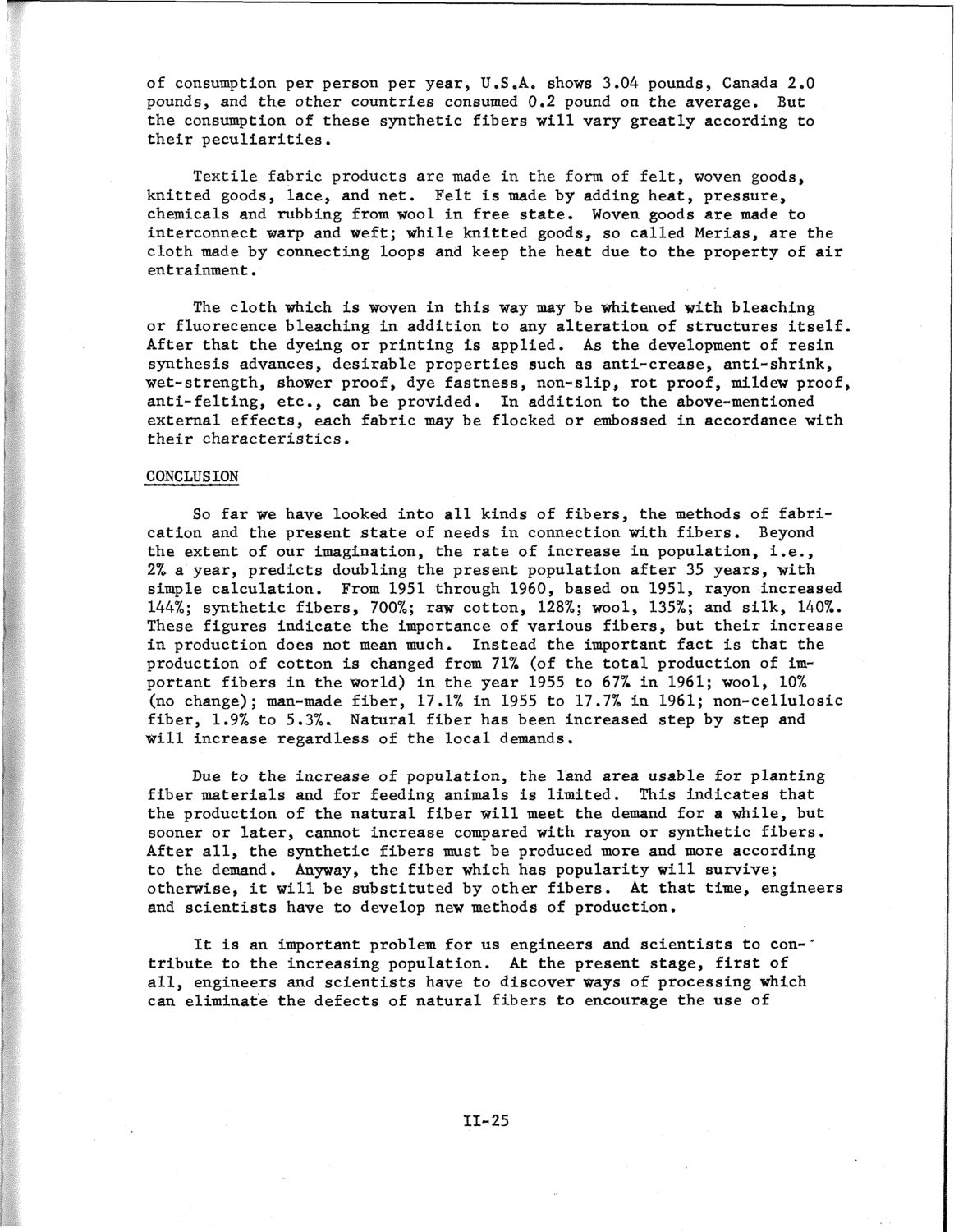| |
| |
Caption: SWE - Proceedings of the First International Conference of Women Engineers and Scientists
This is a reduced-resolution page image for fast online browsing.

EXTRACTED TEXT FROM PAGE:
of consumption per person per year, U.S.A. shows 3.04 pounds, Canada 2.0 pounds, and the other countries consumed 0.2 pound on the average. But the consumption of these synthetic fibers will vary greatly according to their peculiarities. Textile fabric products are made in the form of felt, woven goods, knitted goods, lace, and net. Felt is made by adding heat, pressure, chemicals and rubbing from wool in free state. Woven goods are made to interconnect warp and weft; while knitted goods, so called Merias, are the cloth made by connecting loops and keep the heat due to the property of air entrainment. The cloth which is woven in this way may be whitened with bleaching or fluorecence bleaching in addition to any alteration of structures itself. After that the dyeing or printing is applied. As the development of resin synthesis advances, desirable properties such as anti-crease, anti-shrink, wet-strength, shower proof, dye fastness, non-slip, rot proof, mildew proof, anti-felting, etc., can be provided. In addition to the above-mentioned external effects, each fabric may be flocked or embossed in accordance with their characteristics. CONCLUSION So far we have looked into all kinds of fibers, the methods of fabrication and the present state of needs in connection with fibers. Beyond the extent of our imagination, the rate of increase in population, i.e., 2% a year, predicts doubling the present population after 35 years, with simple calculation. From 1951 through 1960, based on 1951, rayon increased 144%; synthetic fibers, 700%; raw cotton, 128%; wool, 135%; and silk, 140%. These figures indicate the importance of various fibers, but their increase in production does not mean much. Instead the important fact is that the production of cotton is changed from 71% (of the total production of important fibers in the world) in the year 1955 to 67% in 1961; wool, 10% (no change); man-made fiber, 17.17o in 1955 to 17.7% in 1961; non-cellulosic fiber, 1.9% to 5.3%,. Natural fiber has been increased step by step and will increase regardless of the local demands. Due to the increase of population, the land area usable for planting fiber materials and for feeding animals is limited. This indicates that the production of the natural fiber will meet the demand for a while, but sooner or later, cannot increase compared with rayon or synthetic fibers. After all, the synthetic fibers must be produced more and more according to the demand. Anyway, the fiber which has popularity will survive; otherwise, it will be substituted by other fibers. At that time, engineers and scientists have to develop new methods of production. It is an important problem for us engineers and scientists to con-* tribute to the increasing population. At the present stage, first of all, engineers and scientists have to discover ways of processing which can eliminate the defects of natural fibers to encourage the use of 11-25
| |